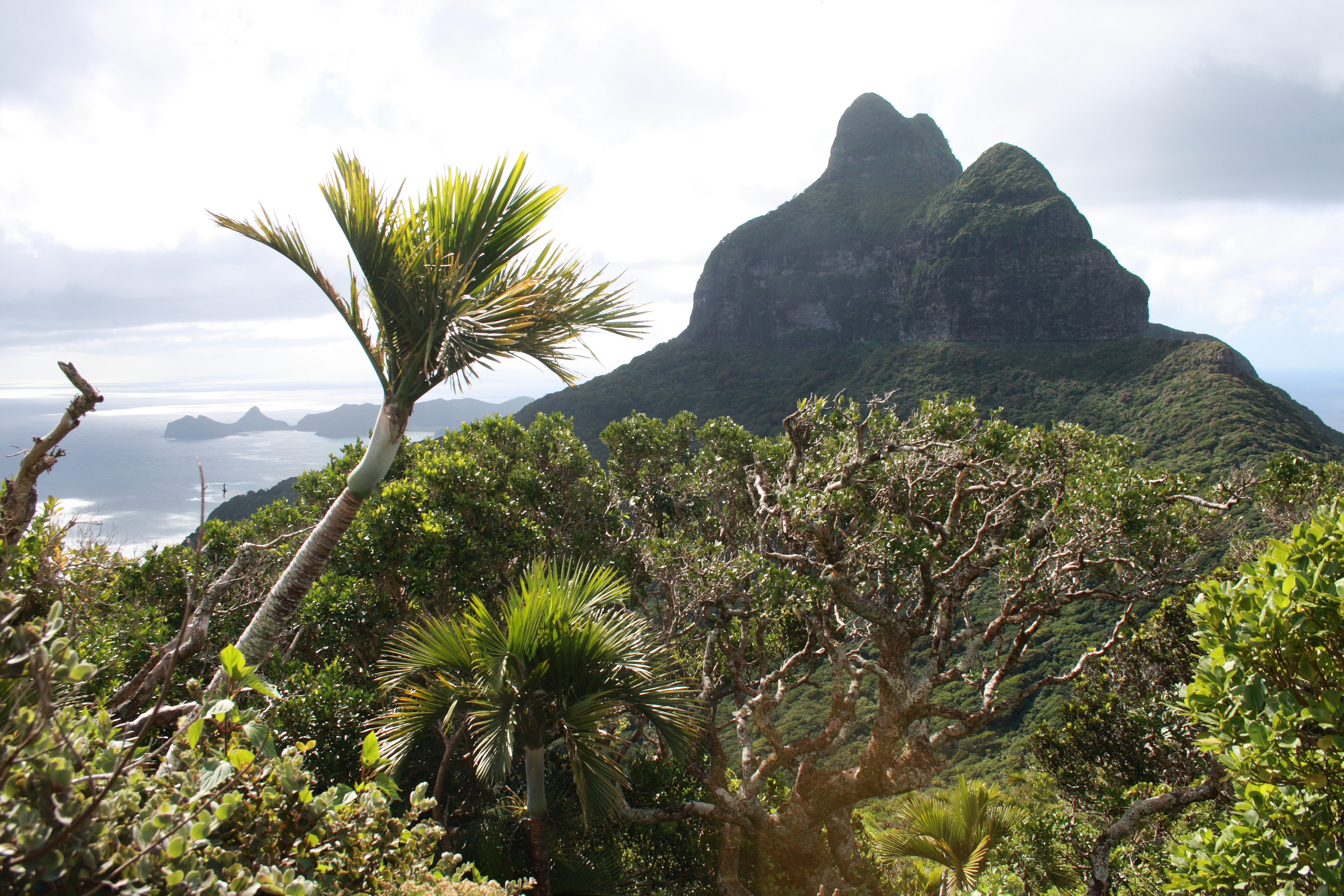Mount Lidgbird on:
[Wikipedia]
[Google]
[Amazon]
Mount Lidgbird, also Mount Ledgbird and Big Hill, is located in the southern section of 
Lord Howe Island
Lord Howe Island (; formerly Lord Howe's Island) is an irregularly crescent-shaped volcanic remnant in the Tasman Sea between Australia and New Zealand, part of the Australian state of New South Wales. It lies directly east of mainland P ...
, just north of Mount Gower
Mount Gower (also known as Big Hill), is the highest mountain on Australia's subtropical Lord Howe Island in the Tasman Sea. With a height of above sea level, and a relatively flat summit plateau, it stands at the southern end of Lord Howe, jus ...
, from which it is separated by the saddle
The saddle is a supportive structure for a rider of an animal, fastened to an animal's back by a girth. The most common type is equestrian. However, specialized saddles have been created for oxen, camels and other animals. It is not k ...
at the head of Erskine Valley, and has its peak at above sea level.
The trek to the summit is for expert climbers only. Ropes are needed to scale the cliffs and slippery, steep terrain. In comparison, Mount Gower
Mount Gower (also known as Big Hill), is the highest mountain on Australia's subtropical Lord Howe Island in the Tasman Sea. With a height of above sea level, and a relatively flat summit plateau, it stands at the southern end of Lord Howe, jus ...
is an easy hike. Halfway up the mountain is Goat House Cave, a former shelter for 19th-century Kentia palm gatherers. From this spot, visitors can see nesting masked boobies and numerous red-tailed tropicbirds.
Etymology
Mount Lidgbird is named by the naval officer Captain Henry Lidgbird Ball in honour of his father, George Lidgbird Ball. Ball junior first sighted Lord Howe Island in 1788 while he was on his way toNorfolk Island
Norfolk Island (, ; Norfuk: ''Norf'k Ailen'') is an external territory of Australia located in the Pacific Ocean between New Zealand and New Caledonia, directly east of Australia's Evans Head and about from Lord Howe Island. Together with ...
in the ship HMS ''Supply''. He also named the nearby rock outcrop Ball's Pyramid
Ball's Pyramid is an erosional remnant of a shield volcano and caldera lying southeast of Lord Howe Island in the Pacific Ocean. It is high, while measuring in length and only across, making it the tallest volcanic stack in the world. Ba ...
.
Flora
''Cryptocarya
''Cryptocarya'' is a genus of evergreen trees belonging to the laurel family, Lauraceae. The genus includes more than 350 species, distributed through the Neotropical, Afrotropical, Indomalayan, and Australasian realms.
Overview
The genus incl ...
'' forest, one of two types found on the island, the other being palm forest, is found in patches on the slopes of the mountain between elevations of above sea level.
Palm species growing on the mountain include ''Hedyscepe
''Hedyscepe canterburyana'', the big mountain palm or umbrella palm, is the sole species in the genus ''Hedyscepe'' of the family Arecaceae. It is endemic to Lord Howe Island, Australia and is threatened by habitat loss. It is a solitary palm wit ...
'' and '' Lepidorrhachis''.
See also
*List of mountains in Australia
This is a list of mountains in Australia.
Highest points by state and territory
List of mountains in Australia by topographic prominence
This is a list of the top 50 mountains in Australia ranked by topographic prominence. Most of these ...
References
{{DEFAULTSORT:Lidgbird Tropical and subtropical moist broadleaf forests Geography of Lord Howe Island Shield volcanoes of Australia Hotspot volcanoes Volcanoes of New South Wales Mountains of New South Wales Volcanoes of the Pacific Ocean Volcanoes of Zealandia Extinct volcanoes Miocene volcanism Polygenetic shield volcanoes